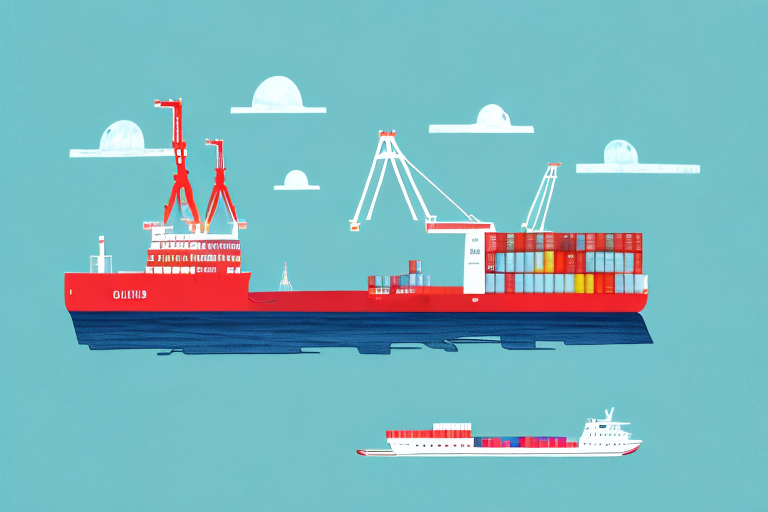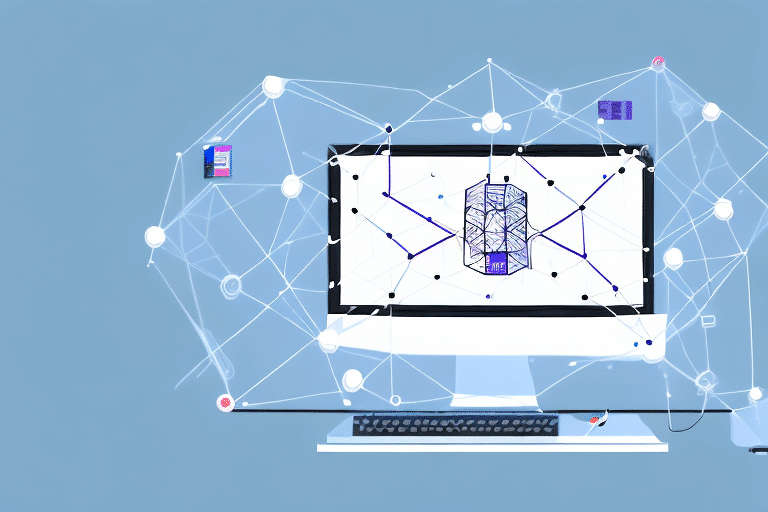Understanding the Pier Pass Fee and Its Impact on Supply Chains
The global supply chain industry is a complex web of interconnected businesses and organizations that rely heavily on efficient transportation methods to move products from one location to another. One of the most critical components of the supply chain is the port, which serves as a gateway for global trade. However, in recent years, many ports have struggled to keep up with the growing demand for their services, resulting in congestion, delays, and increased costs. According to the World Bank, port congestion can lead to significant economic losses, estimated at billions of dollars annually.
To help alleviate some of these issues, many ports have implemented what is known as a Pier Pass Fee. This article provides an in-depth look at the Pier Pass Fee, including how it works, the different types, who pays, the role of shipping lines, strategies for managing costs, and its overall importance in modern supply chains.
What is the Pier Pass Fee and How Does it Work?
The Pier Pass Fee is a premium charge levied on containerized cargo that enters or exits a marine container terminal during peak hours of operation. Specifically, shipping companies are charged extra fees for using ports during designated times, generally weekdays between 8 am and 5 pm. This fee structure incentivizes the movement of cargo outside peak hours, thereby reducing congestion at the terminals.
The fee is administered by the West Coast Marine Terminal Operators Association (WCMTOA), which includes operators in the ports of Long Beach, Los Angeles, Oakland, Seattle, and Tacoma. The MSC Mediterranean Shipping Company, a leading global shipping line, was the first carrier to introduce the Pier Pass Fee in 2005, setting a precedent that has been widely adopted across the industry.
While the Pier Pass Fee has effectively reduced congestion during peak hours, it remains a contentious topic. Critics argue that the fee may be a means for terminal operators to increase profits and that it disproportionately affects smaller shipping companies unable to shift their operations to off-peak times. Despite these criticisms, the Pier Pass Fee continues to be a prevalent practice in the shipping industry.
History of the Pier Pass Fee and Why It Was Introduced
The introduction of the Pier Pass Fee was primarily driven by the need to alleviate congestion and reduce truck emissions around the Los Angeles and Long Beach ports. Prior to the fee's implementation, these terminals experienced severe congestion and extended waiting times, complicating the collection and delivery of goods. This congestion also deterred many shipping companies from utilizing these ports.
In response, the WCMTOA implemented the Pier Pass Fee to incentivize truckers to collect or deliver containers during non-peak hours, such as at night or early morning. This policy not only improved terminal efficiency but also contributed to a reduction in emissions. According to the Environmental Protection Agency (EPA), reducing congestion can significantly lower greenhouse gas emissions, aligning with broader environmental goals.
However, the Pier Pass Fee has faced opposition from some truckers and shipping companies, who view it as an additional financial burden that does not necessarily guarantee faster service or reduced waiting times. Concerns have also been raised about the fairness of the fee, as it is charged per container regardless of its size or weight.
Despite these challenges, the Pier Pass Fee remains in effect, with the WCMTOA continuously monitoring its effectiveness. Over the years, adjustments have been made to the pricing structure, including the introduction of exemptions for certain types of containers, demonstrating the ongoing efforts to balance efficiency with fairness.
The Different Types of Pier Pass Fees and How They Affect Supply Chains
There are three main types of Pier Pass Fees commonly used in the industry:
- Flat Fee: A fixed rate applied to all containers that enter and leave the terminals, regardless of the time of day or week.
- Traffic Mitigation Fee: Designed to encourage shippers to move their cargo during less congested hours by offering discounts or rebates.
- Peak Hour Fee: The highest fee applied during peak hours, typically Monday to Friday from 3 am to 6 am.
Understanding these fees is essential for shippers aiming to manage their costs and maintain an efficient supply chain. For instance, by leveraging the ShipScience tools, companies can optimize their shipping schedules to minimize Pier Pass Fees.
The implementation of Pier Pass Fees has sparked debate within the industry. Proponents argue that the fees are necessary to manage congestion and improve port efficiency, ultimately benefiting the supply chain. Opponents contend that the fees increase the cost of goods and create barriers for smaller shippers. Regardless of the stance, comprehending the different fee structures and their implications is crucial for making informed logistical decisions.
Who Pays for the Pier Pass Fee and When?
The Pier Pass Fee is typically the responsibility of the Beneficial Cargo Owners (BCOs), which include importers and exporters. However, terminal operators may also levy the fee on ocean carriers or trucking companies depending on their specific agreements.
These fees are usually charged during peak hours when terminal capacity is strained. The rates may increase during times when the terminal lacks adequate staff or space to handle the volume efficiently. Most terminal operators publish their fee schedules on their websites, enabling shippers and truckers to plan accordingly and minimize costs.
It's important to note that the Pier Pass Fee is not a government-imposed charge but rather a fee implemented by terminal operators to cover the additional costs of operating during peak times. This includes expenses related to extra staffing, equipment, and other resources necessary to manage the increased cargo volume.
In response to concerns about the Pier Pass Fee, many terminal operators offer programs to offset these costs. These may include discounts for operations conducted during off-peak hours or incentives for regular users of the terminal. Effective strategies, such as utilizing scheduling software and negotiating with carriers, can help shippers and truckers mitigate the financial impact of these fees.
The Role of Shipping Lines in Determining the Pier Pass Fee
Shipping lines play a crucial role in negotiating the Pier Pass Fee rates and durations in collaboration with terminal operators. Factors influencing these negotiations include seasonal demand fluctuations, the current level of congestion at the terminal, and the logistical requirements of cargo transportation.
For example, during peak shipping seasons, terminal operators may seek higher fees to manage increased traffic effectively. Conversely, introducing dynamic pricing models based on real-time data can help adjust fees to current conditions, ensuring a balanced and efficient flow of goods. The adoption of advanced technologies like AI and IoT can further enhance the precision of these fee structures.
The Impact of the Pier Pass Fee on Importers, Exporters, and Trucking Companies
The Pier Pass Fee significantly affects various stakeholders involved in global trade:
- Importers: Increased costs due to higher fees can impact profit margins and pricing strategies. Importers may need to explore cost-saving measures or adjust their supply chain strategies to accommodate these expenses.
- Exporters: Balancing operational efficiency with additional costs can be challenging. Exporters might need to optimize shipping schedules or renegotiate terms with shipping lines to manage fees effectively.
- Trucking Companies: The requirement to pay extra charges during peak hours can strain resources and reduce profitability. Trucking companies may adopt strategies such as shifting operations to off-peak times or investing in more efficient technologies to mitigate these costs.
Understanding the multifaceted impact of the Pier Pass Fee is essential for stakeholders to develop effective strategies that maintain competitiveness while managing additional costs.
Strategies for Managing the Cost of the Pier Pass Fee in Supply Chains
Despite the challenges posed by the Pier Pass Fee, several strategies can help shippers manage these costs:
- Scheduling During Off-Peak Hours: Coordinating deliveries and pickups outside peak times can significantly reduce fees.
- Leveraging Technology: Utilizing tools like ShipScience for real-time tracking and scheduling can optimize operations and minimize fees.
- Partnering with Experienced Freight Forwarders: Collaborating with knowledgeable logistics partners can provide insights and strategies to navigate fee structures effectively.
- Negotiating with Terminal Operators: Engaging in discussions to explore possible fee reductions or exemptions based on volume or loyalty can lead to cost savings.
Effective coordination and collaboration between carriers, shippers, and terminal operators are vital in reducing the financial burden of Pier Pass Fees and enhancing overall supply chain efficiency.
Pros and Cons of the Pier Pass Fee: Is it a Fair System?
The Pier Pass Fee system presents both advantages and disadvantages:
- Pros:
- Reduces Congestion: By discouraging peak-hour traffic, the fee helps in managing terminal capacity effectively.
- Environmental Benefits: Lower congestion leads to reduced emissions, aligning with sustainability goals.
- Enhanced Efficiency: Improved traffic flow during non-peak hours can lead to faster turnaround times.
- Cons:
- Increased Costs: Shippers and trucking companies face higher operational expenses.
- Barrier to Entry: Smaller companies may struggle to compete with established players who can better absorb the fees.
- Perceived Unfairness: Charging fees per container regardless of size or weight may not reflect the actual impact on congestion.
The debate over the fairness of the Pier Pass Fee continues, highlighting the need for ongoing evaluation and adjustment to ensure that the system benefits all stakeholders equitably.
Case Studies: Examples of Successful and Unsuccessful Implementation of the Pier Pass Fee in Supply Chains
Examining real-world examples provides valuable insights into the effectiveness of the Pier Pass Fee:
- Success Story - Long Beach and Los Angeles Ports: The implementation of Pier Pass Fees successfully reduced congestion and emissions, while incentivizing shippers to operate during off-peak hours. According to the Port of Los Angeles, these measures contributed to a significant improvement in terminal efficiency.
- Unsuccessful Attempt - Panama Canal Toll System: The introduction of a new toll system aimed at reducing oversized vessels faced criticism due to unexpected cost increases. The Panama Canal Authority had to revise the toll structure to address the financial strain on shipping companies.
These case studies highlight the importance of careful planning and stakeholder engagement when implementing fee systems. Learning from both successful and unsuccessful examples can aid in the effective application of Pier Pass Fees in various contexts.
Future Trends: What to Expect from the Pier Pass Fee in the Coming Years
As the shipping industry continues to evolve with advancements in technology, the Pier Pass Fee system is expected to adapt accordingly. Future trends may include:
- Dynamic Pricing Models: Utilizing blockchain, AI, and IoT technologies to create dynamic fee structures that adjust in real-time based on traffic flow and congestion levels.
- Increased Automation: Implementing automated systems for scheduling and fee calculation to enhance accuracy and efficiency.
- Enhanced Data Analytics: Leveraging big data to better predict congestion patterns and optimize fee structures accordingly.
The integration of these technologies will likely lead to more flexible and responsive Pier Pass Fee systems, addressing the ongoing challenges of congestion and efficiency in global supply chains.
Conclusion: The Importance of Understanding and Managing the Pier Pass Fee in Global Trade
The Pier Pass Fee is a pivotal component in global trade, playing a significant role in reducing congestion and enhancing efficiency at major ports. However, it introduces additional costs for shippers and trucking companies, which can impact overall supply chain performance. By thoroughly understanding the intricacies of the Pier Pass Fee and implementing effective management strategies, stakeholders can mitigate its financial impact and contribute to a more efficient and sustainable global trade system.
For more insights and tools on managing supply chain complexities, visit the ShipScience website.






















